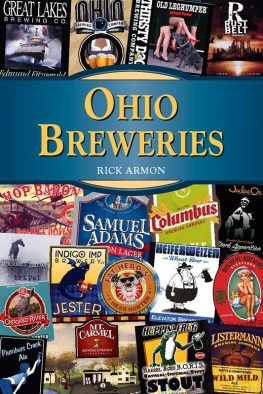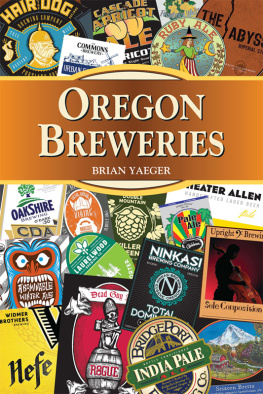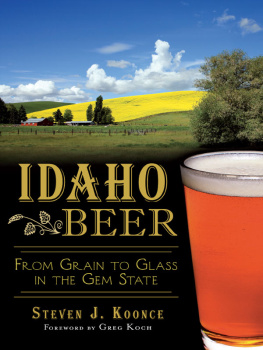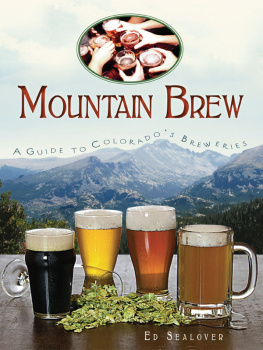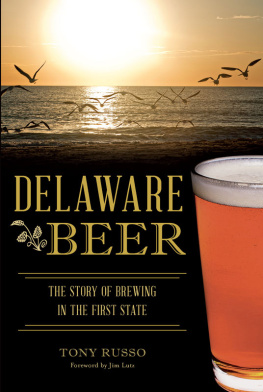Published by American Palate
A Division of The History Press
Charleston, SC 29403
www.historypress.net
Copyright 2013 by Ryan Newhouse
All rights reserved
Front cover: Photograph by Carol M. Highsmith. Courtesy of Carol M. Highsmiths America, Library of Congress, Prints and Photographs Division.
First published 2013
e-book edition 2013
Manufactured in the United States
ISBN 978.1.62584.107.0
Library of Congress CIP data applied for.
print edition ISBN 978.1.62619.021.4
Notice: The information in this book is true and complete to the best of our knowledge. It is offered without guarantee on the part of the author or The History Press. The author and The History Press disclaim all liability in connection with the use of this book.
All rights reserved. No part of this book may be reproduced or transmitted in any form whatsoever without prior written permission from the publisher except in the case of brief quotations embodied in critical articles and reviews.
For my beautiful wife, Jess, who has never failed to be by my side or support my hobbies, endeavors and dreams.
CONTENTS
FOREWORD
With more small craft breweries per capita than nearly anywhere else in the country, Montana is demonstrating that theres no limit to what we can accomplish when we combine our world-class work ethic and entrepreneurial spirit with some of the finest grains on the planet.
Our small craft brewers are proud examples of Montanans doing what they love, creating jobs and investing in their communities while making remarkably great-tasting beer with Montanas blue-ribbon barley.
We, in Montana, are outdoors people. We love to hunt, fish, hike, camp and explore our unparalleled landscapes. Im proud to see the creativity our small craft brewers are using to memorialize the places we hold dear. Whether its Tamarack Brewing Companys Rocky Mountain Front Heritage Ale, Blackfoot IPA made in Helena or Madison River Brewing Companys Salmon Fly Honey Rye, our small brewers are putting Montana places and our way of life on the map while making some of the best-tasting beer in the world.
Breweries are going the extra mile to put Montana on the map. People are traveling to our state to enjoy our pristine open spaces and taste our distinguished beer in family-run breweries.
Now with efforts underway to produce commercial hops in Montana, theres no limit to our states ability to create innovative brews from start to finish.
Hundreds of new Montana jobs are supported by our states cutting-edge craft brewing industry. Its the perfect complement to our rich agriculture heritage. Thats why I helped found the Senates first Bipartisan Small Brewers Caucus.
Id like to thank Ryan Newhouse for documenting both the history of brewing in Montana and its promise for the future.
Throughout my years representing Montana in Congress, as often as possible, I like to spend a day working at various Montana businesses. Ive done everything from building highways and houses to waiting tables and driving eighteen-wheelers.
So on your next stop at a local brewery, dont be surprised if you see me taking your order. Id be glad to pour you a cold one.
All the best,
Max Baucus
Montana U.S. Senator
ACKNOWLEDGEMENTS
This book has surprised me more than it might the reader. After every conversation with every brewer or brewery owner, I sat still for a moment, impressed by their vision, their fortitude and their sheer love for what they do. It happened every time. So I would like to thank them for giving me those moments. I am fortunate to have had the journey of piecing these stories together as if I were sitting in their brewery meeting a new friend.
I would like to thank the friends with whom I do share beers. Firstly, Alan McCormick, an exceptional beer blogger who writes Growler Fills: Craft Beer Enthusiasm and with whom I discuss many craft beer topics. He is also a talented photographer responsible for some of the fine shots you will find in this book. I also thank my friends Adam, Eric and Rachel for sharing too many good beers with me. It has been fun finding new beers with them.
I want to thank Senator Max Baucus (D-MT), not only for taking the time to write kind words for this project but also for his contribution to preserving the craft beer industry as a whole, including its many tangible and intangible connections. And Id like to congratulate him on his upcoming retirement.
I must thank my family in Tennessee for being willing to try whatever beer, wine or cider I brew and open when we see each other. They are always polite with their reviews.
I appreciate all the hard work by the staff at The History Press, especially my editor, Will McKay.
In a broader scope, I want to thank my Missoula community for embracing this craft beer boom. It gives me something to write about.
Last, yet not least, I owe great thanks to my wife, Jessica Redding-Newhouse, for being excited when I am excited and always wanting to try a sip of what Im drinking. I have no doubt our kids will grow up and be awesome like her and because of her.
INTRODUCTION
As the early homesteaders of the late nineteenth century first dug into Montanas soil to carve out new lives, they did so by utilizing every nearby resource they could find. They tilled, chopped and carried small pieces of the Montana landscape to make a home, to make a life. They relied on the rivers and fields for food and work. They made something out of nothing.
By 1910, agriculture was Montanas booming resource, generating more income at the time than mining. The states population surpassed 376,000 (and nearly hit 770,000 by 1918), and more than 26,200 farms were in operation. Dozens of new towns like Wolf Point, Glasgow, Malta, Havre, Plentywood, Scobey, Jordan, Rudyard, Ryegate and Baker appeared out of thin air. As did the breweries.
By 1900, only eleven years after Montana became a state, twenty-one breweries were in operation, and a report by the states industrial board that same year named breweries as one of its most important industries. In fact, that government publication claimed, In the near future Montana will be one of the chief beer producing states in the nation, simply because of the pure water and superior barley grown here.
As the nation saw an influx of immigrants after the Civil War, many traveled west and were well versed in the brewing arts of their homelands. Thanks to the Homestead Act of 1862, the Enlarged Homestead Act of 1909 and the millions spent on advertising the region by transcontinental railways like the Northern Pacific, the Great Northern and the Milwaukee Road, Montana became very attractive to new immigrants, particularly to Germans and Scandinavianstwo cultures with long and rich brewing histories. In fact, in only a few short years thirty-two million of Montanas acres passed from public to private hands.
As an industry, brewing beer had not changed for many centuries, and small breweries were not yet shackled by strong competition; that would come post-Prohibition. Those with a little capital and knowhow could erect a brewery beside a mining camp, along a river or near a cattle trail, serving the universal beverage, as beer was known then, to traders, trappers, miners and stockmen.


